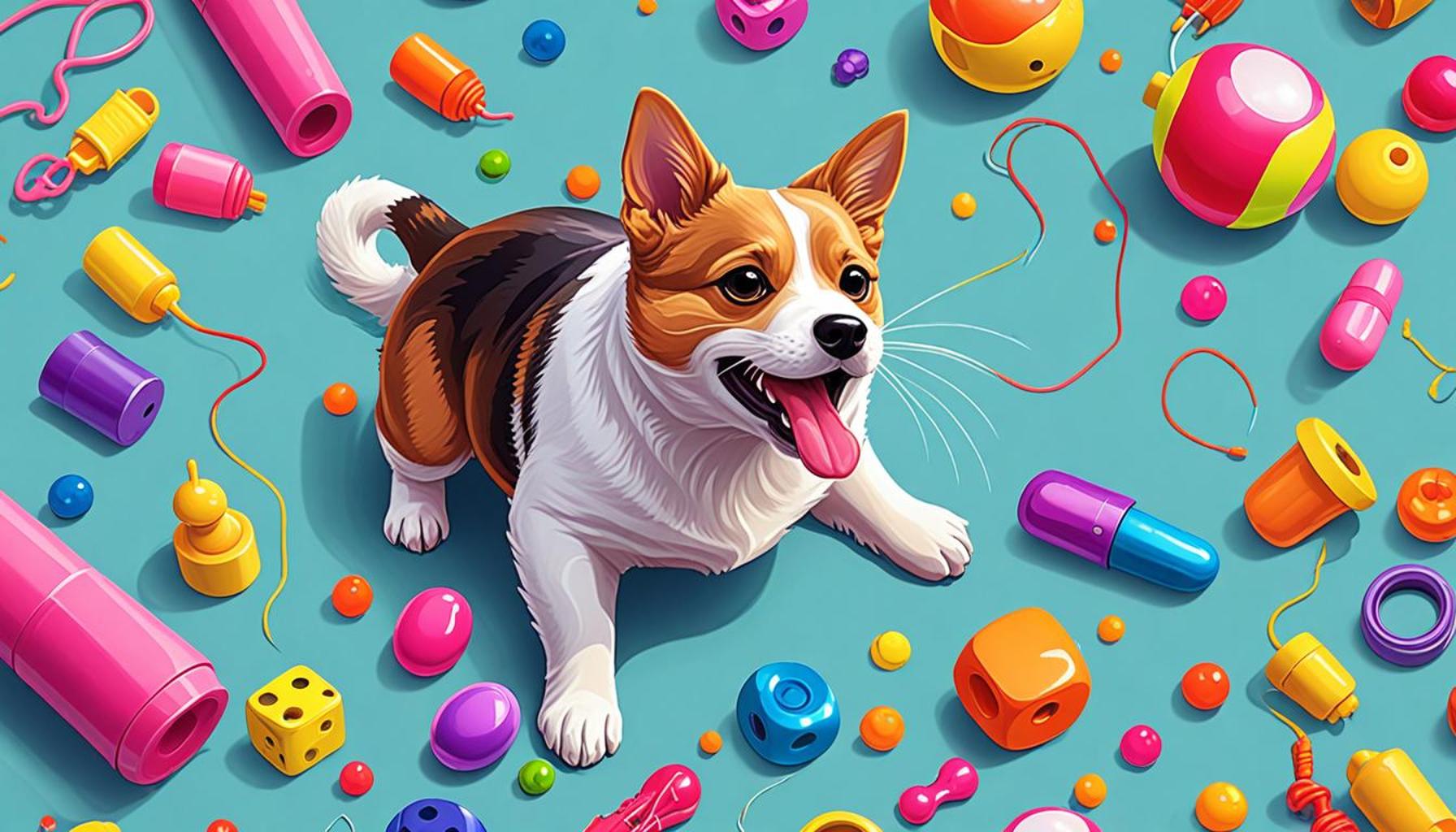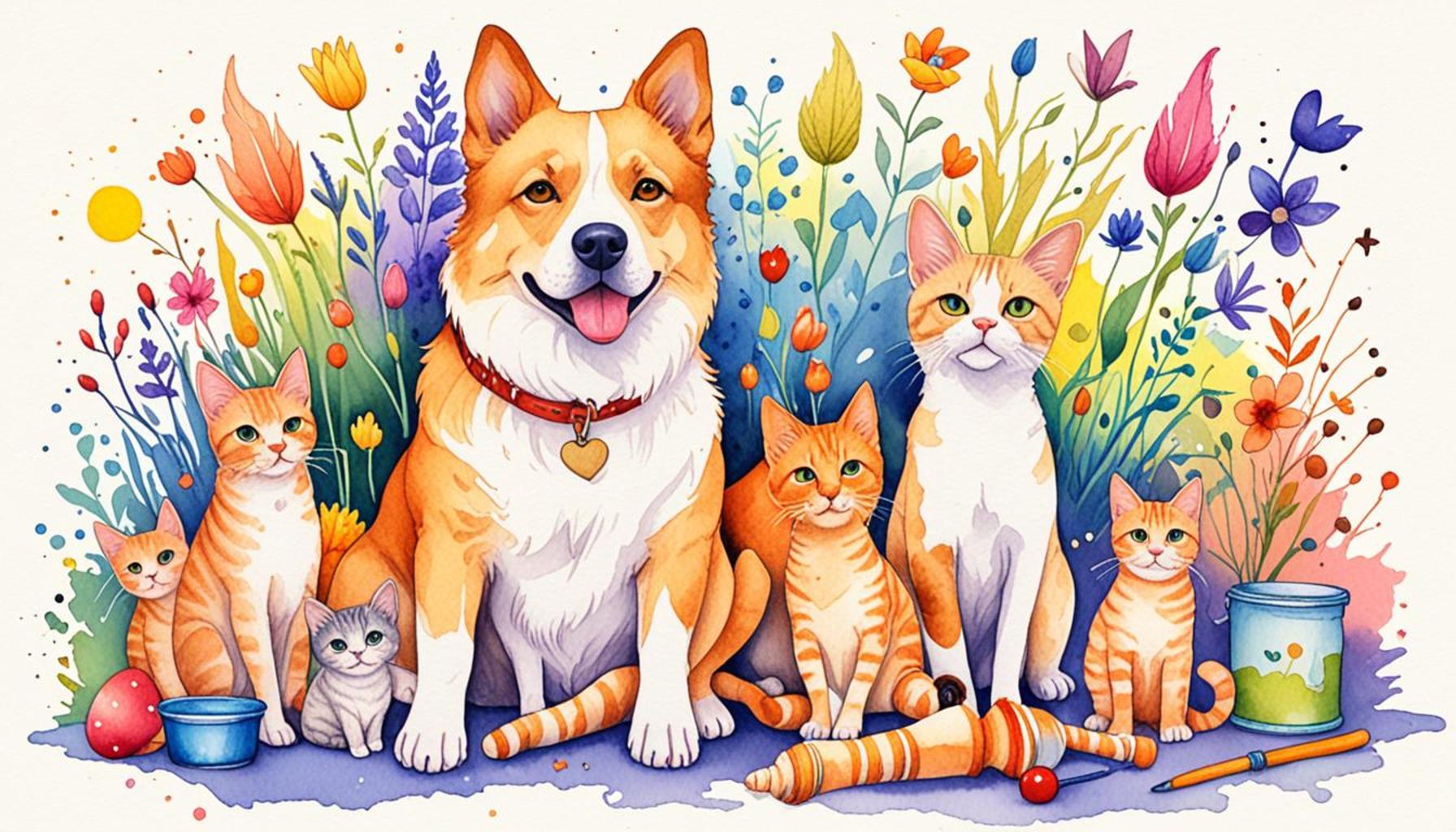The Effectiveness of Interactive Toys in Behavioral Stimulation of Pets

Enhancing Your Pet’s Life with Interactive Toys
In today’s fast-paced world, where many pet owners are juggling busy schedules, it’s easy for our beloved animals to feel neglected, leading to boredom and loneliness. This emotional state can have adverse effects on our pets’ mental and physical health. Interactive toys have emerged as a vital solution for keeping pets engaged, stimulated, and happy. These toys not only provide entertainment but also serve critical functions in promoting behavioral stimulation. By engaging pets both mentally and physically, they play a significant role in enhancing the overall quality of life of our furry companions.
The Benefits of Interactive Toys
Research highlights several key benefits associated with the use of interactive toys:
- Reducing anxiety: Many pets experience anxiety when left alone or during stressful situations such as thunderstorms. Interactive toys can serve as an outlet for their energy, helping to alleviate feelings of stress. For instance, a treat-dispensing toy can keep a dog occupied, allowing it to focus on play rather than anxious thoughts.
- Enhancing cognitive skills: Toys that challenge pets to solve puzzles or navigate mazes can significantly enhance their mental agility. For example, a cat might engage with a puzzle toy that requires it to push balls into specific holes to retrieve treats, thereby sharpening its problem-solving abilities.
- Encouraging exercise: With obesity rates on the rise among pets in the United States, interactive toys can encourage physical activity. For example, automated ball launchers can keep dogs running and fetching, promoting a healthier lifestyle while preventing weight-related health issues.
Variety of Options for Every Pet
The variety of interactive toys available on the market today is astounding, catering to the diverse needs of different breeds and personalities. From food-dispensing puzzles that challenge your pet’s intellect to automated ball launchers that stimulate their natural instincts, there’s something for every pet. Local pet stores and online retailers offer an impressive selection, making it easier than ever for pet owners to find the perfect toy tailored to their companion’s unique preferences.
Understanding the effectiveness of these toys in promoting behavioral stimulation is crucial for providing pets with enriching experiences. As we delve deeper into this topic, it becomes clear that interactive toys are not mere playthings; they are instrumental in fostering happiness and overall behavioral health in pets. Investing in these toys can lead to a happier, healthier, and more well-adjusted pet, reinforcing the bond between pets and their owners.
In conclusion, as pet owners, it is our responsibility to ensure our pets are not only cared for physically but mentally as well. Interactive toys are a simple yet effective means to enrich their lives, making each day a new adventure filled with joy and purpose.

DISCOVER MORE: Click here for local adoption resources
Understanding Interactive Toys and Their Role in Pet Behavior
As we explore the effectiveness of interactive toys in behavioral stimulation of pets, it’s important to recognize the scientific principles driving their design. These toys engage not only the physical capabilities of pets but also target their cognitive growth. Designed with various textures, shapes, and mechanisms, interactive toys challenge pets to think and problem-solve. By doing so, they provide both mental enrichment and physical activity, which are crucial for a well-rounded pet life.
The psychology behind interactive toys stems from the concept of operant conditioning, which posits that behavior is influenced by the consequences that follow it. When pets engage with these toys, they often receive a reward—be it a treat or a sense of accomplishment. This reward system can significantly alter their behavior, encouraging positive actions, reducing destructive tendencies, and enhancing their willingness to learn new tricks. Thus, interactive toys become not just a source of entertainment, but a tool for behavioral improvement.
Types of Interactive Toys That Promote Behavioral Stimulation
To truly understand how interactive toys enhance pet behavior, we must consider various types available on the market. Each type serves a different purpose and caters to unique traits of different pets. Here are some prevalent categories:
- Puzzle Feeders: These toys require pets to solve a problem—such as sliding pieces or flipping levers—to access their food or treats. By stimulating critical thinking, puzzle feeders help pets develop persistence and problem-solving skills.
- Ball Launchers: Automated or manual, ball launchers cater to dogs’ natural instincts for chasing and retrieving. These devices provide interactive playtime, ensuring dogs get adequate exercise while developing their coordination and agility.
- Laser Toys: Particularly favored by cat owners, laser toys encourage hunting behaviors in a safe manner. As cats chase the elusive light, they engage in physical exercise and satisfy their predatory instincts, which reduces behavioral issues linked to boredom.
- Interactive Plush Toys: These often come with sounds and textures that entice animals to play. Some plush toys even allow for a tug-of-war action or squeak when bitten, making the experience more engaging.
Each type of interactive toy has its unique mechanics and benefits, making it vital for pet owners to select suitable options that align with their pet’s age, size, and personality. Understanding how these toys operate and the skills they aim to develop can enhance the decision-making process for pet owners looking to improve their pet’s quality of life.
In summary, interactive toys are more than just additions to your pet’s toy box. They play a pivotal role in keeping pets mentally stimulated, physically active, and behaviorally sound. With the wide range of options available, pet owners are encouraged to explore which kinds of interactive toys best suit their furry friends and how these toys can ultimately lead to a happier and healthier lifestyle.
The use of interactive toys has gained significant traction among pet owners seeking to enhance their furry friends’ cognitive engagement. As the demand for mentally stimulating play increases, so does the understanding of its impact on animal behavior. Interactive toys are designed to challenge pets physically and mentally, encouraging them to solve problems, which can lead to improved behavior and reduced anxiety. For instance, puzzle toys that dispense treats require pets to think critically and develop strategies to access the reward, facilitating their natural instincts while keeping them entertained.
Moreover, pet owners have reported fascinating results in their animals’ demeanor after integrating interactive toys into their playtime routines. The continued engagement with toys leads to better energy management, reducing undesirable behaviors such as chewing or excessive barking. This stimulation helps the pet to channel their energy into productive activities, thus fostering a healthier relationship between pet and owner. Enhanced play not only fosters better physical conditioning but also significantly contributes to the emotional well-being of pets, making them more social and well-adjusted.
As a result, the advantages of incorporating these toys into pets’ lives extend beyond mere entertainment. They can help facilitate training, reducing the need for confinement due to behavioral issues. Pet owners are increasingly recognizing the need for tools that promote active and dynamic interactions, leading to a happier and more fulfilled animal. Statistics show that interactive toys are associated with a notable decrease in separation anxiety among pets, demonstrating their profound effect on emotional health.
| Advantage | Description |
|---|---|
| Enhances Cognitive Skills | Interactive toys stimulate problem-solving and mental agility in pets. |
| Reduces Behavioral Issues | Alleviates anxiety and boredom, leading to fewer destructive behaviors. |
There is a plethora of interactive toys available that cater to various types of pets and preferences, from dogs to cats. Each toy offers a unique form of challenge and engagement based on the pet’s play style. Owners are encouraged to explore these options, as selecting the right type of interactive toy can enhance bonding experiences, leading to a satisfying and joyful relationship.
DISCOVER MORE: Click here for useful training tips
Evaluating the Benefits of Interactive Toys on Pet Behavior
The influence of interactive toys extends beyond mere entertainment; they significantly contribute to the behavioral health of pets. Numerous studies have indicated that consistent engagement with interactive toys can lead to improvements in various behavioral aspects, including reduction in anxiety, enhancement of social skills, and the prevention of destructive behaviors.
One of the prominent ways interactive toys contribute to behavioral stimulation is through the engagement of pets in what is known as self-directed play. In essence, these toys empower pets to control their playtime experiences, promoting independence and self-confidence. For instance, dogs that utilize puzzle feeders not only enjoy the challenge of obtaining their food but also learn to strategize their actions, which can ultimately manifest in increased patience and adaptability in other areas of their life.
The Link Between Mental Stimulation and Behavioral Health
A key finding in behavioral research indicates a strong correlation between mental stimulation and the overall well-being of pets. Interactive toys provide the necessary complexity to engage a pet’s mind, keeping boredom at bay. Dogs and cats that lack mental stimulation are often prone to behavioral issues such as excessive barking, chewing, or scratching. By introducing interactive toys into their routine, pet owners can create an enriching environment that enhances their pet’s focus and reduces problematic behaviors.
- Stress Reduction: Engaging with interactive toys has been shown to lower stress levels in pets. A study conducted by the University of California found that dogs interacting with puzzle toys exhibited less cortisol—a hormone linked to stress—compared to those without such engaging activities. This hormonal balance is critical, especially for anxious pets.
- Social Skills Development: Interactive toys can also encourage social play among pets, particularly when used in group settings, such as dog parks or pet playdates. Engaging with toys in the presence of other animals allows pets to foster social bonds, eases shyness, and enhances well-rounded behavioral traits.
- Healthy Weight Management: With the rise in pet obesity rates in the United States—estimated to be around 54% of dogs and 60% of cats—interactive toys serve as a crucial component in adhering to exercise regimens. For example, ball launchers can incite energetic play sessions that promote cardiovascular health and weight control, which are essential for the longevity and quality of life for pets.
Experts recommend a balanced approach when utilizing interactive toys, incorporating a mix of physical and mental challenges tailored to a pet’s individual needs. Observation of a pet’s interaction with these toys can yield insights into their preferences, strengths, and areas needing development. Pet owners are encouraged to introduce new toys gradually, allowing pets to adjust and discover various forms of engagement.
Moreover, interactive toys can serve as quality bonding experiences between pets and their owners. Engaging in play alongside their pets not only strengthens the human-animal bond but also allows owners to share in their pet’s joy and excitement while reinforcing positive behaviors. Observational techniques, such as rewarding pets when they succeed in solving a problem, can further enhance the training process and cement a positive behavioral trajectory.
In sum, the positive implications of interactive toys in the behavioral stimulation of pets highlight their critical role in modern pet care. By investing in these stimulating tools, pet owners can cultivate healthier, happier, and more well-rounded companions that thrive in their ever-evolving environment.
DISCOVER MORE: Click here to learn how to decode your dog’s signals
Conclusion: Unleashing Potential Through Interactive Play
The compelling evidence underscores the vital role that interactive toys play in enhancing the behavioral health of pets. From the reduction of anxiety to supporting social skills and curbing destructive behaviors, these tools are not merely novelties; they serve as integral components of responsible pet ownership. By introducing mental stimulation into daily routines, pet owners can effectively combat common behavioral issues stemming from boredom and lack of engagement.
Furthermore, the benefits extend beyond the individual pet. Interactive toys create opportunities for enhancing the bond between pets and their owners through shared experiences, communication, and rewarding play that encourages positive behavior. The dual aspects of physical and mental stimulation provided by these toys promote not only healthy weight management but also an enriched quality of life, allowing pets to thrive.
As studies reveal a strong link between interaction and mental well-being, it is crucial for pet owners to embrace interactive toys as a central part of pet care. With the staggering statistics on pet obesity and behavioral issues across the United States, investing in these stimulative tools is more than beneficial; it’s essential. Ultimately, a commitment to providing pets with the right interactive experiences fosters environments where they can exhibit their full potential, leading to healthier, happier companions.
In this ever-evolving landscape of pet care, the integration of interactive toys should be a priority for every pet owner dedicated to nurturing a fulfilling and vibrant life for their furry friends.


